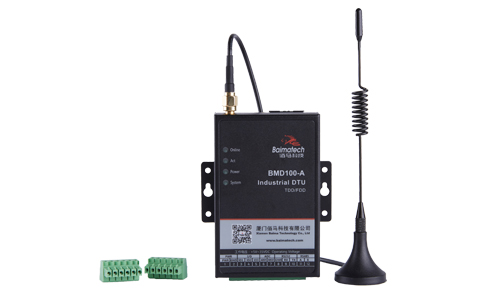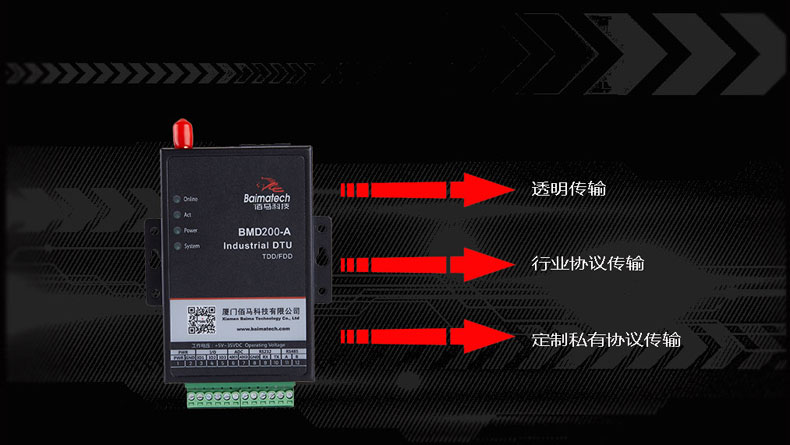|
4483 views|2 replies
baimatech77
Currently offline
|
The OP
Published on 2019-10-10 14:50
Only look at the author
This post is from Industrial Control Electronics
Latest reply
Details
Published on 2019-10-31 17:26
| |
|
|
||
|
2
Published on 2019-10-30 17:57
Only look at the author
| |
|
Personal signature
|
|
|
|
|
tgd343310381
Currently offline
|
3
Published on 2019-10-31 17:26
Only look at the author
|
|
Personal signature
高能立方 ACDC电源模块 |
|
|
|
- 【Posts】Common basic knowledge of 4G DTU
- 【Posts】Wireless monitoring of pipe networks in old residential areas using industrial 4G dtu
- 【Posts】4G DTU
- 【Posts】What is 4G DTU and what are its specific functions?
- 【Posts】Please recommend 4G module
- 【Posts】There are three questions about LC series-parallel circuit, transistor static operating point, and 4G 5G diffraction capability.
- 【Posts】Application of 4G solar energy monitoring
- 【Posts】It’s not fun anymore. The delivery time of 4G modules is about 4-6 weeks.
- 【Download】4G DTU Transmission Technical Specification Manual
- 【Download】Comparison of Lora, 433MHz, 4G and Wi-Fi communication technologies
- 【Download】4G Mobile Broadband Revolution - A Comprehensive Analysis of EPC and 4G Packet Networks (Original Book 2nd Edition)
- 【Download】The Complete Guide to LTE - LTE, LTE-Advanced, SAE, VoLTE and 4G Mobile Communications
- 【Download】Analysis of the relationship between 4G, WLAN, and Bluetooth
- 【Download】Global operator 2G/3G/4G frequency band list
- 【Download】LTE—B3G/4G mobile communication system wireless technology
- 【Download】DTU basic knowledge introduction
- 【Design】# Fifth Lichuang Electronic Design Competition# Use MQTT to realize 4G shooting and DTU transparent transmission function modules for P2P intranet penetration
- 【Design】4G Digital Agriculture
- 【Design】Tudou remote control 4G remote control car ppm transmitter with screen V3.0 | 4G remote control car
- 【Design】【2023 Electric Competition】4G wireless LORA communication positioning system
- 【Design】GPD Pocker3 4G module
- 【Design】EC20usb network card 4g
- 【Articles】5G network speed is faster than 4G, but the perception is poor! Wu Hequan: 6G standard formulation should focus on user needs
- 【Articles】3G/4G base station physical layer black box verification method
- 【Articles】Intelligent application of 4G communication gateway in flood monitoring and early warning
- 【Articles】Samsung was found guilty of infringing Datang's 4G patent in Germany, affecting almost all smartphones on sale
- 【Articles】MediaTek launches Helio G91 chipset, only supports 4G
- 【Articles】Mouser Electronics now sells Taoglas TFX flexible invisible antenna for 5G/4G, Wi-Fi and GNSS applications
-
Yibite provides Bluetooth, 4G DTU, WiFi, lora and other modules for free. Come and play if you want to!
WanttolearnwirelessknowledgebyusingmodulesDon'tworry,wehaveeverythingyouneedIfyouareinterested,comeandapply!Themodelsthatcanbeappliedforevaluationandtrialareasfollows:⑴Bluetoothmodule①E104-BT05-TBBluetoothmoduletestboardx5pieces②E104-BT0 ...
-
Analysis of common problems with DTU
TheOnlinelightofDTUisonforawhileandthenoffforawhile?(1)CheckwhetherthecentralserveraddressandportconfiguredinDTUarenormal;(2)Ifthecentralserveraddressisnormal,checktheport(whetherportmappinghasbeendoneandwhetherthereisanyhostcomputersoftwar ...
-
2024-11-06_NXP Technology Day Tour Seminar Guangzhou Station_Random Shots and Notes
OnNovember6,2024,IhadthehonortoparticipateintheNXPTechnologyDayTourSeminarinGuangzhouThefollowingareseveralnewproducts,whichhavemanyenhancements/improvementsinintegrationandperformanceindicators.Cross-borderprocessorii5D-GPU,and7ItalsohasaD ...
- Understanding the boost small signal model
- Which of these five books do you want to be online first? Come and vote for it~
- DSP basic information
- PCF1171C 4-bit LCD Automotive Clock Driver
- Conversion of wire harness diameter between American standard AWG and national standard "square"
- How to read photoelectric encoder information via DSP2812 SPI?
- Microchip introduces 28-pin flash microcontroller
EEWorld Datasheet Technical Support
-
Europe's three largest chip giants re-examine their supply chains
At the Electronica 2024 CEO Roundtable held just last week, the CEOs of three chip giants, Infine
-
It is reported that Kioxia will be approved for listing as early as tomorrow, and its market value is expected to reach 750 billion yen
On November 21, Reuters reported that with the support of Bain Capital, Kioxia will obtain approv
-
The US government finalizes a $1.5 billion CHIPS Act subsidy to GlobalFoundries to support the latter's expansion of production capacity in the US
On November 21, the U.S. Department of Commerce officially announced yesterday that it will provi
- SK Hynix announces mass production of the world's highest 321-layer 1Tb TLC 4D NAND flash memory, plans to ship it in the first half of 2025
- UWB is a new way to use it in cars. Can wireless BMS also use it?
- Filling the domestic gap! China Mobile, Huawei and others jointly released the first GSE DPU chip
- Samsung Electronics NRD-K Semiconductor R&D Complex to import ASML High NA EUV lithography equipment
- Apple reveals the secret of its own chip success: competitors can't use the latest cutting-edge technology
- A big chip war is about to start: Qualcomm and MediaTek are involved in notebooks, and AMD is reported to enter the mobile phone market
- Exynos 2600 chip is the key, Samsung is reportedly going to launch a 2nm chip counterattack
- Problems with STM32 and passive buzzer playing sound
- Embedded Tutorial_DSP Technology_DSP Experiment Box Operation Tutorial: 2-28 Building a Lightweight WEB Server Experiment
- OPA847IDBVR op amp domestic replacement
- AG32VF407 Test UART
- [Digi-Key Follow Me Issue 2] Chapter 1: Sharing on receiving the goods
- What model is this infrared receiver? Which model can be used instead? Thank you
- Selling brand new unopened ZYNQ 7Z020 FPGA core board
- The LORA module used in the lithium battery-powered water meter setting can save energy when 100 water meters are installed in one corridor.
- I would like to ask, when a port is set to RX0, is it necessary to set the input and output direction of this port?
- Why is this year so difficult? It’s even more difficult than during the pandemic. I’m 30 and facing unemployment. I’m so confused.
- Ask about the voltage regulator test question
- [Xiaohua HC32F448 Review] About Xiaohua Semiconductor's UART interrupt sending and PRINTF construction and redirection
- 【BIGTREETECH PI development board】 HDMI output test
- 【BIGTREETECH PI development board】+08. Audio test (zmj)
- [Xiaohua HC32F448 Review] +RTC electronic clock
- 有奖直播报名| 高可靠性IGBT新选择 —— 安世半导体650V IGBT
- 【直播时间】12月19日(周四)下午15:00-16:30
【直播好礼】定制双肩商务包、30元京东卡、吸管玻璃杯
- 安世半导体直播报名中
- 直播主题:安世半导体理想二极管与负载开关,保障物联网应用的稳健高效运行
直播时间:12月17日(周二)下午14:00
报名就有机会获得:定制双肩商务包、30元京东卡、吸管玻璃杯
- PI 电源小课堂 | 无 DC-DC 变换实现多路高精度输出反激电源
- 时间:即日起-12月15日
看视频学习电源干货,答题赢取京东卡!
- 参会有好礼 | 2024 瑞萨电子MCU/MPU工业技术研讨会
- 深圳站:11月30日(周六)深圳湾万怡酒店
上海站:12月06日(周五)上海喜玛拉雅酒店
奖励设置:现金红包、螺丝刀套装或30元京东卡
- Littelfuse 新品赋能电子产品安全可靠并高效, 10+挑战等你探索!
- Littelfuse 应用赋能星球,覆盖了诸多应用痛点及解决办法,邀请工程师一起探索,解锁更多设计力!
- 下载资料赢好礼!看Vicor模块化电源解决方案如何推动创新
- 活动时间:即日起-2024年12月31日
如何参与:点击活动页内您想了解的模块,找到资料下载即可参与抽奖,活动结束后统一发奖!
- 有奖活动|英飞凌高密度双相电源模块为高性能运算平台而生
- 活动时间:即日起-12月15日
活动奖励:蓝牙音箱、氮化镓充电器套装、黑色小背包
- 本周精选下载推荐:电源管理基础Dummies
- 本周小编给大家带来一本超简单、超干货的电子书——《电源管理基础Dummies》!内容深入浅出,排版舒服简洁,分分钟能get到电源管理最核心的知识内容。
EEWorld
subscription
account

EEWorld
service
account

Automotive
development
circle

About Us Customer Service Contact Information Datasheet Sitemap LatestNews
- I want to get started with 3D machine vision, what should I do?
- I want to get started with ST microcontrollers, what should I do?
- I want to get started with microcontrollers and plcs, what should I do?
- Please recommend some introductory books on machine learning
- For an introduction to deep learning in computers, please give a learning outline
- For an introduction to neural network programming, please give a study outline
- How to get started with FPGA hardware design
- What book is better for beginners of single chip microcomputer?
- How to quickly get started with microcontrollers
- What software is used to program esp32


 Room 1530, Zhongguancun MOOC Times Building,
Block B, 18 Zhongguancun Street, Haidian District,
Beijing 100190, China
Tel:(010)82350740
Postcode:100190
Room 1530, Zhongguancun MOOC Times Building,
Block B, 18 Zhongguancun Street, Haidian District,
Beijing 100190, China
Tel:(010)82350740
Postcode:100190
 京公网安备 11010802033920号
京公网安备 11010802033920号






 提升卡
提升卡 变色卡
变色卡 千斤顶
千斤顶